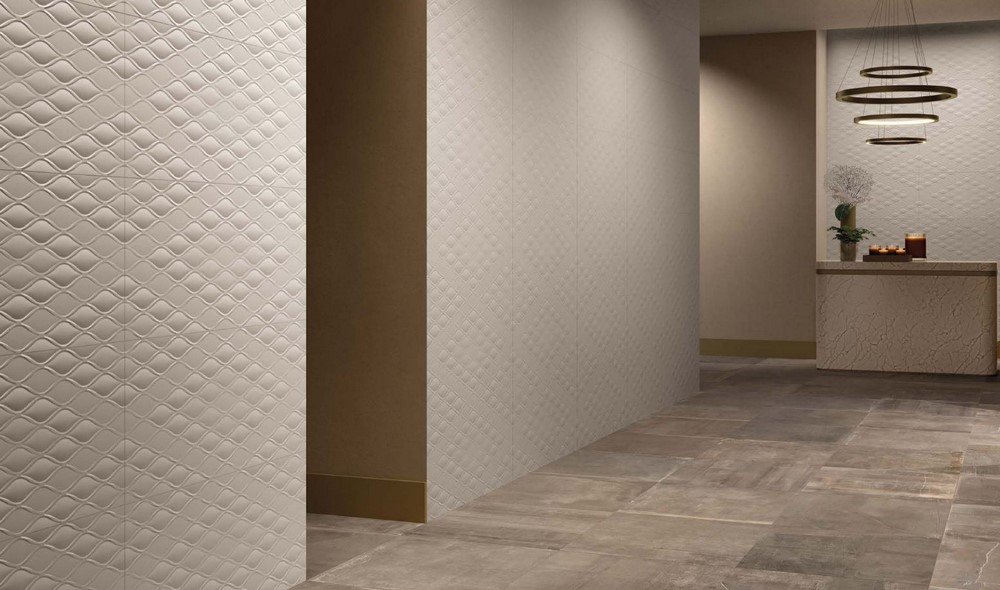Choosing the right tiles for your home can transform your space, adding both beauty and functionality. However, with so many options available, it’s easy to feel overwhelmed. Whether you’re renovating your bathroom, kitchen, or entire home, here’s everything you need to know before making your decision.
1. Understand the Different Types of Tiles
The first step in choosing the right tiles is understanding the various types available:
- Ceramic Tiles: These are made from clay and are glazed to create a hard-wearing surface. Ceramic tiles are affordable, versatile, and available in a wide range of colors and patterns. They’re great for walls and low-traffic areas.
- Porcelain Tiles: A subtype of ceramic tiles, porcelain is denser and more durable, making it suitable for high-traffic areas. It’s also water-resistant, making it ideal for bathrooms and kitchens.
- Natural Stone Tiles: These include marble, granite, slate, and travertine. Natural stone tiles offer a luxurious and timeless appeal but require regular maintenance to prevent staining and damage.
- Glass Tiles: Perfect for backsplashes, glass tiles reflect light beautifully, adding brightness and a modern touch to any space. However, they can be slippery, so they’re not ideal for flooring.
- Mosaic Tiles: Often used for decorative purposes, mosaic tiles come in sheets and are composed of small pieces of glass, stone, or ceramic. They’re great for adding visual interest to a space.
2. Consider the Room’s Functionality
The functionality of the room where the tiles will be installed plays a critical role in your choice:
- Bathrooms: For bathrooms, choose tiles that are slip-resistant, especially for the floor. Porcelain and textured tiles work well here.
- Kitchens: Durability and ease of cleaning are key in kitchens. Porcelain or ceramic tiles are ideal for flooring, while glass or ceramic tiles are popular for backsplashes.
- Living Areas: In living rooms or hallways, consider tiles that can withstand high foot traffic. Natural stone or wood-look porcelain tiles can add warmth and elegance.
- Outdoor Areas: For outdoor spaces, choose tiles that are frost-resistant and have a rough texture to prevent slipping, such as textured porcelain or natural stone.
3. Think About Tile Size and Layout
Tile size and layout can dramatically affect the look and feel of a room:
- Large Tiles: These can make a room feel more spacious and are easier to clean due to fewer grout lines. They’re ideal for open areas like living rooms.
- Small Tiles: Small tiles can add detail and are often used in showers, backsplashes, or for creating intricate designs.
- Tile Layout: The layout can change the perception of a space. For instance, laying rectangular tiles in a herringbone pattern can add a dynamic feel, while straight lines create a more traditional look.
4. Don’t Forget About Grout
Grout is often an afterthought, but it plays a significant role in the overall appearance of tiled spaces:
- Color: Choosing a grout color that contrasts with your tiles can make the design stand out, while a matching color creates a seamless look.
- Type: Epoxy grout is more durable and resistant to stains, making it ideal for kitchens and bathrooms. Cement-based grout is more traditional but requires sealing to prevent stains.
5. Consider Maintenance Requirements
Some tiles require more maintenance than others:
- Natural Stone: While beautiful, natural stone tiles need regular sealing and can be prone to staining.
- Porcelain and Ceramic: These tiles are low-maintenance, requiring only regular cleaning.
- Glass: Glass tiles can show water spots and fingerprints easily, so they may need more frequent cleaning.
6. Budget Wisely
Tiles vary widely in cost, so it’s important to choose a product that fits your budget. Don’t forget to factor in the cost of installation, as this can sometimes exceed the cost of the tiles themselves.
- Ceramic: Generally the most affordable option, with a wide variety of designs to fit any budget.
- Porcelain: Slightly more expensive than ceramic but worth it for high-traffic areas.
- Natural Stone: Typically the most expensive due to the material and the cost of installation.
7. Think Long-Term
Finally, consider the longevity and timelessness of your tile choice. Trends come and go, but classic styles like subway tiles or natural stone tend to stand the test of time. Think about how your choice will fit with future changes to your decor.
Conclusion
Choosing the right tiles for your home is a significant decision that requires careful consideration of materials, functionality, size, layout, maintenance, and budget. By taking the time to evaluate your needs and options, you can select tiles that not only enhance the beauty of your home but also stand up to the demands of everyday life. With the right choice, your tiled spaces will continue to impress for years to come.



